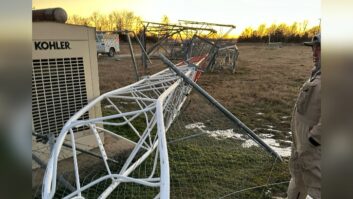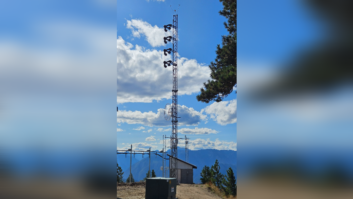FAA proposes tougher tower approval rules
Sep 1, 2006 12:00 PM, By Harry Martin
The Federal Aviation Administration (FAA) has proposed major changes to the factors it considers in determining whether proposed construction of new towers or modifications to existing communications facilities are hazards to air navigation. The proposed changes would have a significant effect on broadcasters by preventing or delaying tower construction, and restricting changes in existing facilities even where no new tower construction is proposed.
Under the existing FCC rules broadcasters must notify the FAA of any proposed new tower construction or modification that is 200 feet or higher or that lies within certain specified airport approach paths. The FAA evaluates these notifications to determine whether the tower is a potential physical obstruction to aircraft and, in the case of FM radio and VHF-TV facilities, whether the facility will potentially cause electromagnetic interference (EMI) to aircraft navigation equipment.
In its pending rule making, the FAA is proposing to expand the scope of its review of FCC-licensed communications facility applications, particularly their EMI effect. At a minimum the new rules, if adopted, will cause significant delays in the construction timetable for otherwise routine towers. Additionally, whole new classes of FCC applications will be made subject to prior FAA approval.
Among other changes, the FAA proposes:
- The filing of notices of proposed new construction for any man-made structure (whether a tower or a building) that will support a radiating element used for radio frequency transmission on the following frequencies: (i) 54MHz to 108MHz, (ii) 150MHz to 216MHz, (iii) 406MHz to 420MHz, (iv) 932MHz to 935/941MHz, (v) 952MHz to 960MHz, (vi) 1,390MHz to 1,400MHz, (vii) 2,500MHz to 2,700MHz, (viii) 3,700MHz to 4,200MHz, (ix) 5,000MHz to 5,650MHz, (x) 5,925MHz to 6,525MHz, (xi) 7,450MHz to 8,550MHz, (xii) 14.2GHz to 14.4GHz and (xiii) 21.2GHz to 23.6GHz. This covers the FM and VHF-TV bands as well as some frequencies used for remote pickup facilities.
- The filing of notices with respect to any change to a communications facility previously approved by the FAA that operates on any of the above frequencies, including a change in frequency, the addition of a frequency, an increase in ERP equal to or greater than 3dB and the modification of a radiating element, which increases the height of the antenna mounting location 100 feet or more, changes the antenna specifications (including gain, beam width, polarization or pattern), or changes the antenna azimuth/bearing (e.g., point-to-point microwave).
- The filing of notices of any change in the type of antenna used by a communications facility operating on any of the above frequencies, if the antenna type was specified in a previous FAA determination.
- No-hazard determinations would not be effective until 40 days after their issuance, or after resolution of any appeals, instead of the current practice of making them effective on the date of issuance. Notices of construction would have to be filed 60 days in advance, instead of the current 30 days.
- The filing of notices of any proposed new tower construction or modification near a private use airport or heliport that has at least one FAA-approved instrument approach procedure. Notice of proposed new tower construction or modification on or near a private use airport or heliport is not currently required.
- To make changes in the FAA’s evaluation scheme for the five airport runway �imaginary surfaces� (in FAA parlance, horizontal, conical, primary, approach and transitional surfaces), the agency uses to determine whether a proposed new or modified facility may potentially be a hazard.
Martin is a past president of the Federal Communications Bar Association and a member of Fletcher, Heald & Hildreth, Arlington, VA. E-mail[email protected].
Dateline
Oct. 2 is the deadline for radio stations in Iowa and Missouri to file their biennial ownership reports.
Oct. 2 is the date on which radio stations in Alaska, Florida, Hawaii, Iowa, Missouri, Oregon, the Pacific Islands, Puerto Rico, the Virgin Islands and Washington must place their annual EEO reports in their public files and post them on their websites.












